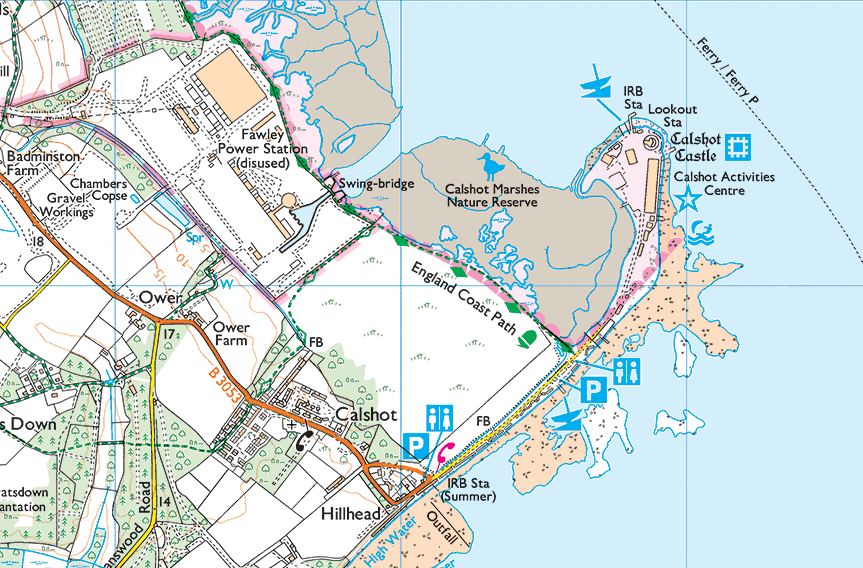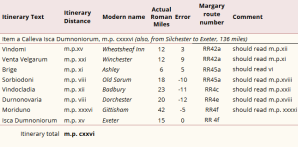Under the year 501, the Anglo-Saxon chronicle states:
Her cuom Port on Bretene 7 his .ii. suna Bieda 7 Mægla mid .ii. scipum on þære stowe þe is gecueden Portesmuþa 7 ofslogon anne giongne brettiscmonnan, swiþe ęþelne monnan.
jebson t., 2007, asc a. swanton, m., 2000,14.
Here Port and his 2 sons, Bieda and Mægla, came with 2 ships to Britain at the place which is called Portsmouth, and killed a certain young British man – a very noble man.
As explained in The Anglo-Saxon Chronicle and Arthur’s death, this event would have taken place in the year 539 and refers to the battle of Camlan. It is proposed that the Briton referred to was Arthur.
Bieda
The Germanic name Bieda survives in the Portsmouth area in the placename Bedhampton.

It is mentioned in the Domesday Book with the name Betametone:

It was originally a village but is now a suburb of the Borough of Havant. The name appears in the placename Biedanheafde (Bieda’s Head) in the ASC under the year 675 when the West Saxon king Æscwine defeated the Mercian invasion by Wulfhere.
Mægla
Swanton maintains Mægla is probably a British name citing the names Coinmægl and Farinmægl that appear in the ASC entry for year 577. Mægla may be identified with Gildas’s tyrant Maglocunus, that is Maelgwn of Gwynedd, whose death is recorded in the Annales Cambriae under the year 547:
| AC A text | AC B text | |
| [a103] annus . Mortalitas magna inqua pausat mailcun rex genedotœ . | [b575] Anus mortalitas magna fuit ín brítannia mailguin · guíneth · obiit· vnde dicitur hir hun wailgun en llís Ros · tunc fuít lallwelen |
Gildas’s refers to Maelgwn’s aggression:
Quid tu enim, insularis draco, multorum tyrannorum depulsor tam regno quam etiam vita supra dictorum, …
And thou, the island dragon, who hast driven many of the tyrants mentioned previously, as well from life as from kingdom, …WILLIAMS H., 1899, 76,77.
The first poem in the Llyfr Du Caerfyrddin (Black Book of Carmarthen), entitled Ymddiddan Myrtin a Talyessin (The Dialogue of Myrddin and Taliesin), informs us that Maelgwn made an attack on Dyfed:

Triad 1a indicates the Demetian Arthur was a contemporary of Maelgwn:
Arthur in Pen Teyrned ym Mynyw, a Dewi yn Pen Esgyb, a Maelgwn Gwyned yn Pen Hyneif;
Bromwich R., 2006, 1.
Arthur as Chief of Princes in Mynyw (St David’s), and Dewi as Chief of Bishops, and Maelgwn Gwynedd as Chief of Elders.
Culhwch, on meeting Arthur, addresses him as Pen Teyrned yr Ynys hon (Chief of Princes of this Island). However, according to the V. Cadoci:
In diebus itaque illius rex quidam, nomine Mailgunus, in tota Brittannia regnabat, …
wade-evans a.w., Lloyd s. (ed.), 2013,72, 73.
In his (St Cadog’s) days a certain king, Maelgwn by name, was reigning over all Britannia (Wales), …
Perhaps, Maelgwn’s attack on Arthur’s Dyfed was not entirely successful and that later, with Saxon help, he achieved Arthur’s demise in Dumnonia at Camlan, thus achieving supremacy over the whole of Wales. Perhaps as a celebration of this victory, three places in Gwynedd bear the name Camlan as indicated by the red markers in the map below.










